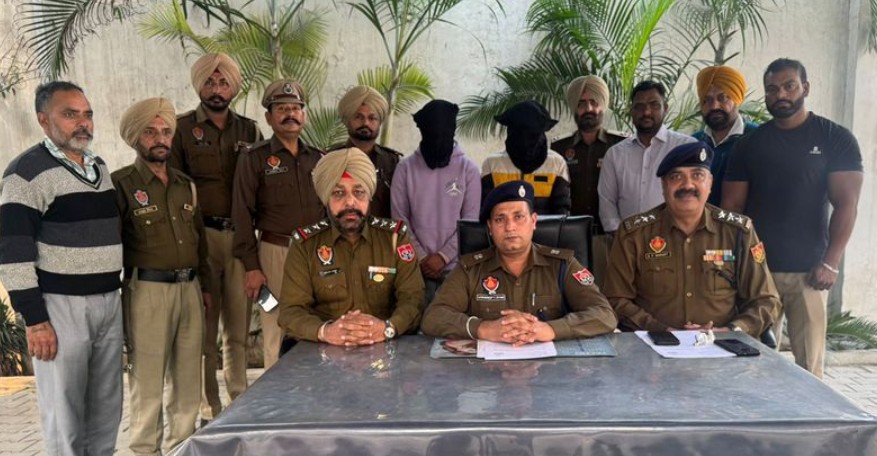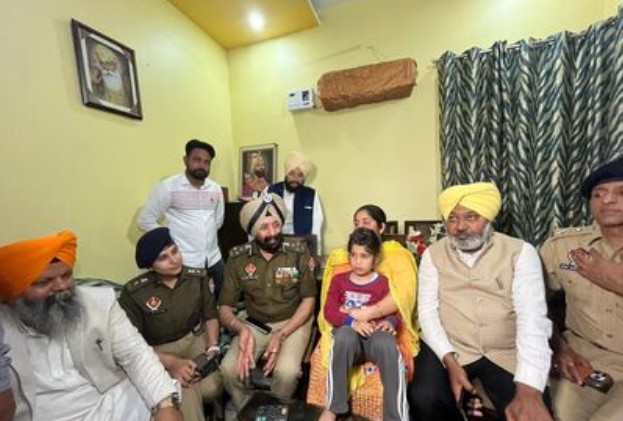A seven-year-old boy was rescued in a dramatic operation within twenty-four hours of his kidnapping, with the ordeal culminating in the kidnapper’s death during a gunfight with law enforcement. The incident began on the afternoon of March 14 when Aarav Sharma, a young child, was abducted near his school. Witnesses reported seeing a masked man forcibly taking the boy and fleeing in a vehicle before anyone could intervene. The shocking event spread fear throughout the community, and the authorities were alerted immediately.
The parents of the child, Ravi and Priya Sharma, were devastated upon learning about their son’s abduction. Their fears worsened when they received a chilling ransom call just hours later. The kidnapper demanded a large sum of money in exchange for Aarav’s release, warning them not to contact the police. However, trusting the authorities to act swiftly, the family reported the crime, prompting an urgent response from law enforcement.
A special task force was formed to handle the situation. The team included local police, anti-kidnapping squads, and cybercrime experts. They quickly analyzed the ransom call and tracked the phone number used by the kidnapper. Their investigation revealed that the phone was active in a remote location on the outskirts of the city. Meanwhile, CCTV footage from the school premises provided a crucial lead. The surveillance cameras captured the suspect’s vehicle, which police traced to an abandoned warehouse. This discovery set the stage for an intensive search-and-rescue operation to locate the child and apprehend the abductor before any harm could come to him.
As night fell, law enforcement prepared for a tactical mission. They surrounded the warehouse, using night-vision technology and bulletproof gear to ensure the safety of the child. Drone surveillance helped confirm that the boy was inside. The police then initiated negotiations, urging the kidnapper to surrender and release the child unharmed. However, instead of complying, the abductor opened fire, triggering a fierce gunfight. Officers returned fire strategically, ensuring that Aarav was not put in danger. During the exchange, the suspect sustained multiple gunshot wounds and was incapacitated. Once neutralized, officers stormed the building, secured the child, and provided immediate medical attention before rushing him to a nearby hospital for a check-up.
The successful rescue brought immense relief to Aarav’s family. His parents, overwhelmed with emotion, embraced him tightly, thanking the police officers who had risked their lives to bring him back safely. The emotional reunion was witnessed by neighbors and well-wishers, who applauded the brave efforts of the law enforcement team.

Following the rescue, investigators identified the kidnapper as Vikram Singh, a thirty-five-year-old former security guard who had been dismissed from his job due to misconduct. Preliminary reports suggested that financial desperation drove him to commit the crime, as he was burdened with significant debts and had no stable source of income. Further inquiries revealed that Singh had been planning the abduction for weeks, closely monitoring the child’s routine and waiting for the perfect opportunity to strike. Digital footprints and phone records provided additional evidence of his elaborate scheme, confirming that he acted alone.
The incident sparked widespread discussion about child safety and the necessity of enhanced security measures around schools. Concerned parents urged authorities to implement stricter safety protocols to prevent similar incidents in the future. The city’s mayor commended the swift police action, emphasizing their dedication and quick response. Government officials also announced plans to introduce new measures, including increasing security personnel near schools, installing more surveillance cameras, and launching awareness campaigns about child safety.
Despite the successful operation, the investigation continued to determine whether Singh had any accomplices or if there were other angles to the case that required further scrutiny. Law enforcement examined whether he had a criminal record or was previously involved in similar activities. Legal experts commented on the situation, stating that the police had followed protocol by engaging in the gunfight only after the suspect had opened fire. Many acknowledged the necessity of such actions in high-risk situations where innocent lives are at stake.
The case reignited conversations about strengthening child protection measures. Advocacy groups recommended increased security around schools, teaching children about personal safety, establishing neighborhood watch programs, and creating dedicated emergency helplines for child abduction cases. Social media was flooded with messages of appreciation for the police force, with citizens expressing relief over the boy’s safe return and calling for harsher punishments for those who commit crimes against children.
The rescue of Aarav Sharma within twenty-four hours demonstrated the efficiency and bravery of the law enforcement agencies involved. The successful operation not only saved a young life but also underscored the importance of swift action, technological assistance, and coordinated efforts in tackling crimes. While the immediate threat was eliminated, the incident served as a wake-up call for parents, educators, and authorities to reinforce child safety measures and remain vigilant. The tragic end for the kidnapper served as a reminder of the consequences of criminal actions, reaffirming society’s commitment to justice and security. As Aarav recovered from the traumatic experience, his story became an inspiration for ongoing efforts to protect children and prevent such incidents in the future.


